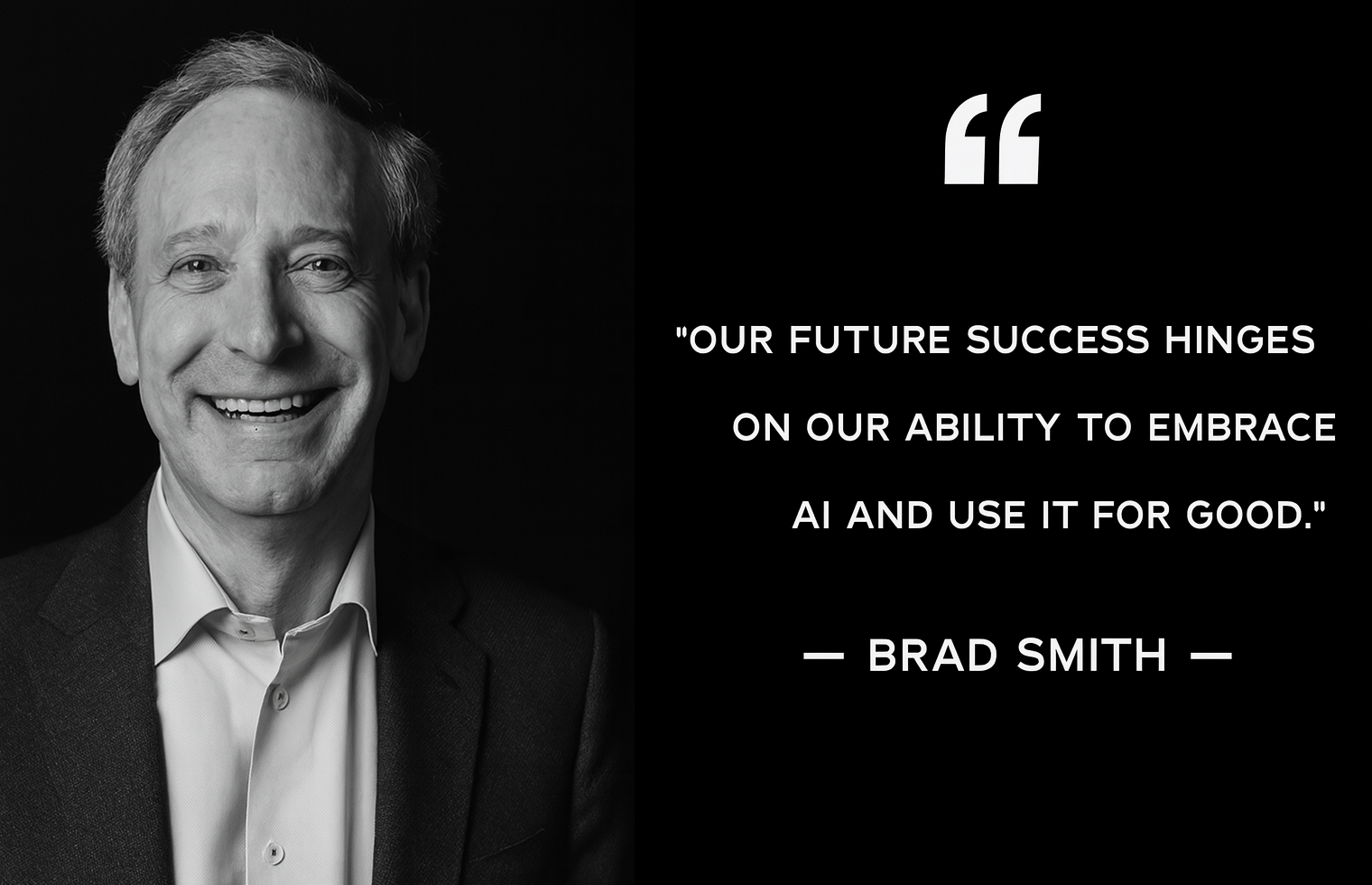Table of Contents
Introduction
Search behavior is evolving quickly, and so are the technologies behind it. Traditional SEO focused on search engines, but with AI-driven tools like Google’s SGE, Perplexity, ChatGPT, and Gemini, the rules of visibility are shifting.
People no longer want a list of links—they expect direct, accurate, and conversational answers. This change has created a new discipline: Answer Engine Optimization (AEO). AEO is about structuring and presenting content so AI-powered assistants, voice search, and generative engines can interpret it and deliver it as authoritative answers.
Unlike traditional SEO, which relies on keywords and backlinks, AEO emphasizes clarity, context, semantic search, and structured data. This guide will show how businesses, brands, and creators can adapt their strategies to not just rank, but to be the answer.
What is AEO?
Answer Engine Optimization (AEO) is about shaping your content so that AI-powered tools can easily understand, interpret, and deliver it as direct, helpful answers.
- AEO goes beyond keyword targeting—it focuses on context, intent, and structured information.
- By aligning content with natural language queries and leveraging semantic search, businesses can ensure their answers are the ones delivered by AI assistants, voice search, and generative platforms.
- As consumers grow accustomed to quick, accurate, and conversational answers, the importance of AEO continues to rise.
To understand why this matters, we’ll explore the different types of answer engines, their role in today’s digital landscape, and how they’re transforming the way people access and trust information.
Types of Answer Engines
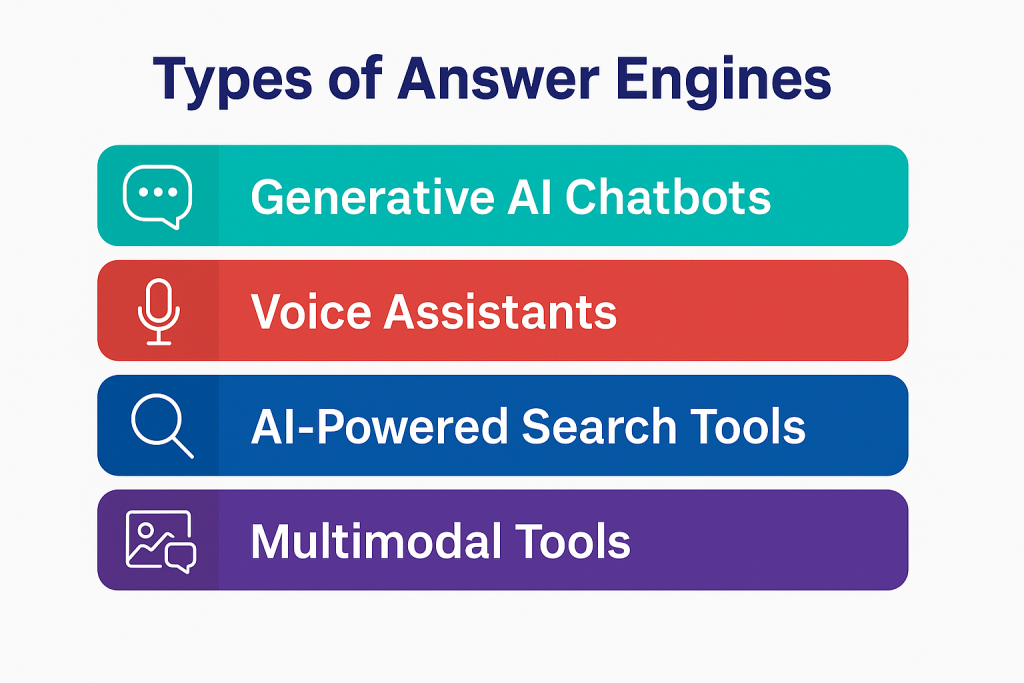
Today, a wide range of answer engines is transforming the way people access information. Here are the main types of answer engines shaping this shift:
Generative AI Chatbots
- Platforms like ChatGPT, Bard, and Gemini offer conversational, human-like responses that extend beyond simple facts.
- They can handle complex or open-ended queries, summarize large amounts of data, and even offer recommendations or creative input.
- These tools are becoming the go-to for individuals seeking in-depth, context-rich responses in one place.
Voice Assistants
- Assistants such as Google Assistant, Alexa, and Siri make it easy to get information hands-free.
- Whether you’re cooking, driving, or multitasking at work, you can simply ask a question and receive a quick, spoken response.
- This convenience is driving the growth of voice search, particularly for local information, quick facts, and everyday tasks.
AI-Powered Search Tools
- Features like Google’s Search Generative Experience (SGE) and Microsoft Copilot are redefining traditional search.
- Instead of returning a list of links, they present AI-generated summaries, insights, and suggested resources directly in the results.
- This reduces the time users spend digging through content and helps them get to answers much faster.
Multimodal Tools
- Innovations like Perplexity AI, Google Lens, and ChatGPT’s multimodal capabilities combine text, images, and even video to generate richer answers.
- For example, you can upload a photo of a product and instantly receive details, reviews, or buying options.
- These tools are especially valuable for research, shopping, and problem-solving in real time.
How Do Answer Engines Actually Work?
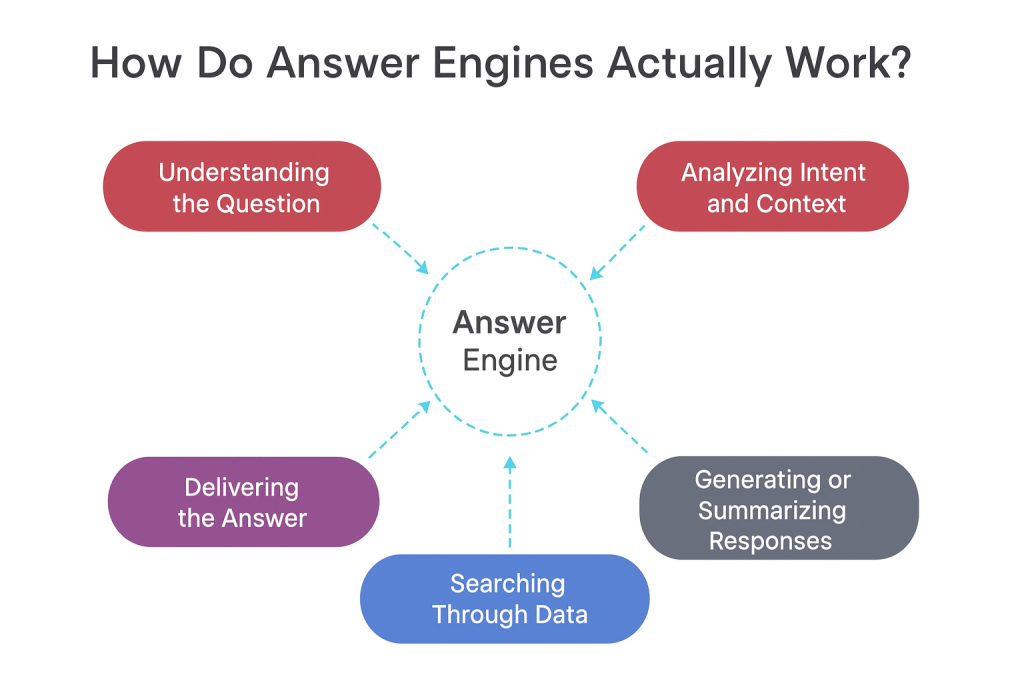
The next step is understanding the process: how answer engines transform your query into an instant, precise answer.
- Understanding the Question: Answer engines go beyond keyword matching. They interpret the full meaning of your query, breaking it down into smaller parts and identifying the topic, type of information required, and any key details.
- Analyzing Intent and Context: Instead of focusing only on words, they determine what you’re really asking. By analyzing intent and context, they can tailor responses more accurately to your needs.
- Searching Through Data: With the question understood, answer engines scan massive data sources—websites, databases, articles, and more—to pinpoint the most relevant and reliable information.
- Generating or Summarizing Responses: Some rely on generative AI to create new, conversational answers based on patterns they’ve learned. Others pull direct information from trusted sources or provide concise summaries to highlight key points.
- Delivering the Answer: Because they process queries in real time, answer engines present clear answers instantly—without requiring you to sift through multiple links. The result is a faster, smoother, and more focused search experience.
Benefits of Answer Engine Optimization (AEO)
Visibility & Engagement
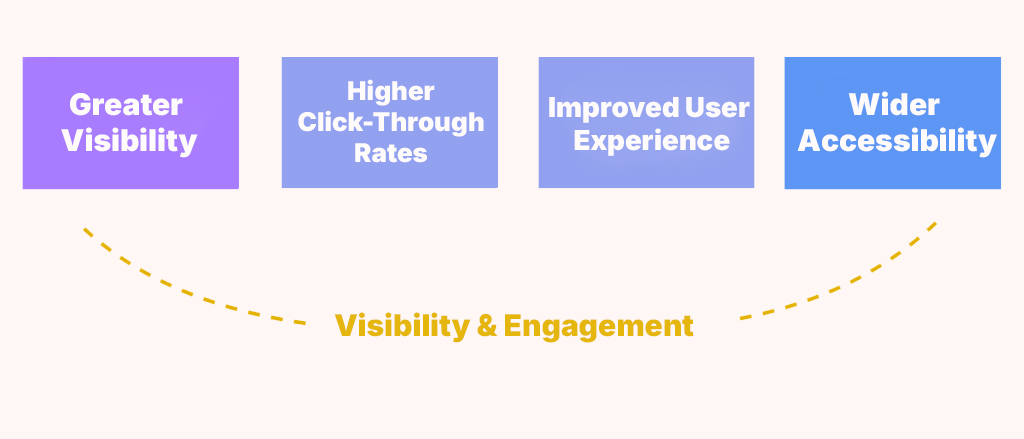
- Greater Visibility: AEO positions your content in answer boxes, People Also Ask sections, and featured snippets, putting your brand front and center on SERPs.
- Higher Click-Through Rates: Clear, direct answers grab attention, increasing engagement and encouraging more users to click for deeper insights.
- Improved User Experience: Quick, precise answers reduce the need to browse multiple pages, leading to higher satisfaction and stronger engagement.
- Wider Accessibility: AEO makes your content available across platforms and devices, including voice-based search, broadening your reach to diverse audiences.
Authority & Competitive Advantage

- Stronger Brand Authority: Consistently delivering accurate, reliable answers builds credibility and establishes your brand as an industry thought leader.
- Voice & AI Search Readiness: Optimizing for conversational queries ensures your content is easily picked up by voice assistants and generative AI, extending reach in emerging search formats.
- Quality Traffic & Conversions: By aligning with user intent, AEO attracts highly targeted visitors who are more likely to convert.
- Competitive Edge: As search engines prioritize answer-based results, AEO helps you outperform competitors who still rely on traditional SEO tactics.
Growth & Long-Term Impact
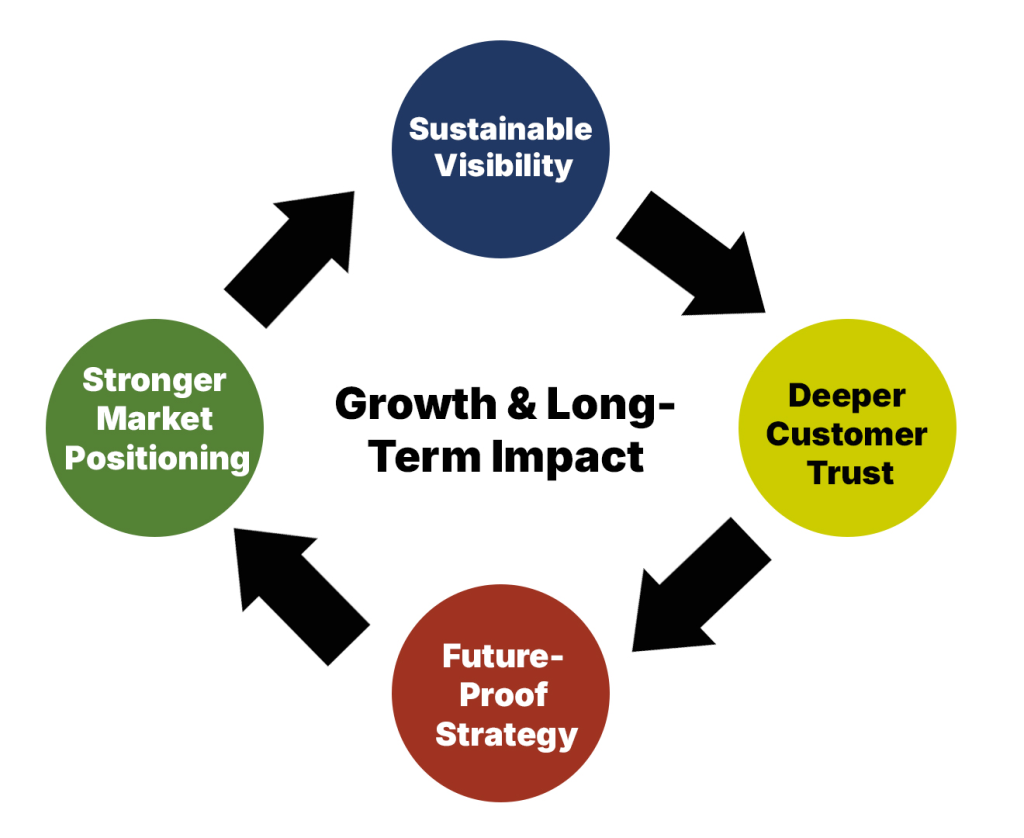
- Sustainable Visibility: As answer engines grow in influence, AEO ensures your content continues to surface in evolving search experiences.
- Deeper Customer Trust: Providing consistent, clear answers builds lasting relationships and increases brand loyalty.
- Future-Proof Strategy: With AI and voice search expanding rapidly, AEO keeps your content aligned with where digital search is heading.
- Stronger Market Positioning: By adapting early, your brand secures a leadership role in the shift toward answer-driven discovery.
Key Strategies for Implementing AEO
Content & User Intent
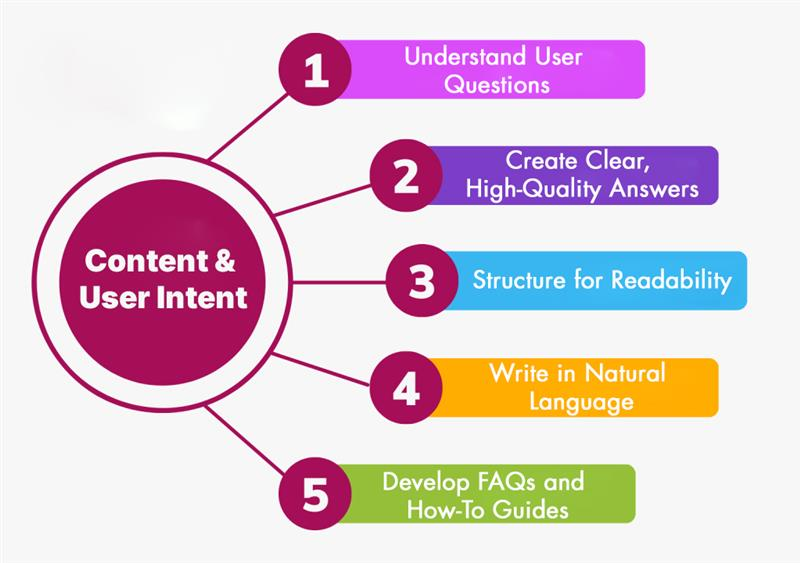
- Understand User Questions: Identify what your audience is asking and the intent behind it—whether they want quick facts, detailed explanations, or step-by-step guidance.
- Create Clear, High-Quality Answers: Provide well-researched, accurate, and concise answers. Aim to deliver the core response within the first paragraph so both users and AI can capture it instantly.
- Structure for Readability: Use question-based headers (H2s, H3s), bullet points, and numbered lists to make content easy to scan for both people and algorithms.
- Write in Natural Language: Use conversational phrasing to mirror how users actually speak, which is especially important for voice search.
- Develop FAQs and How-To Guides: Create dedicated FAQ pages and step-by-step guides that address common queries directly and align with AEO best practices.
Technical & Platform Optimization
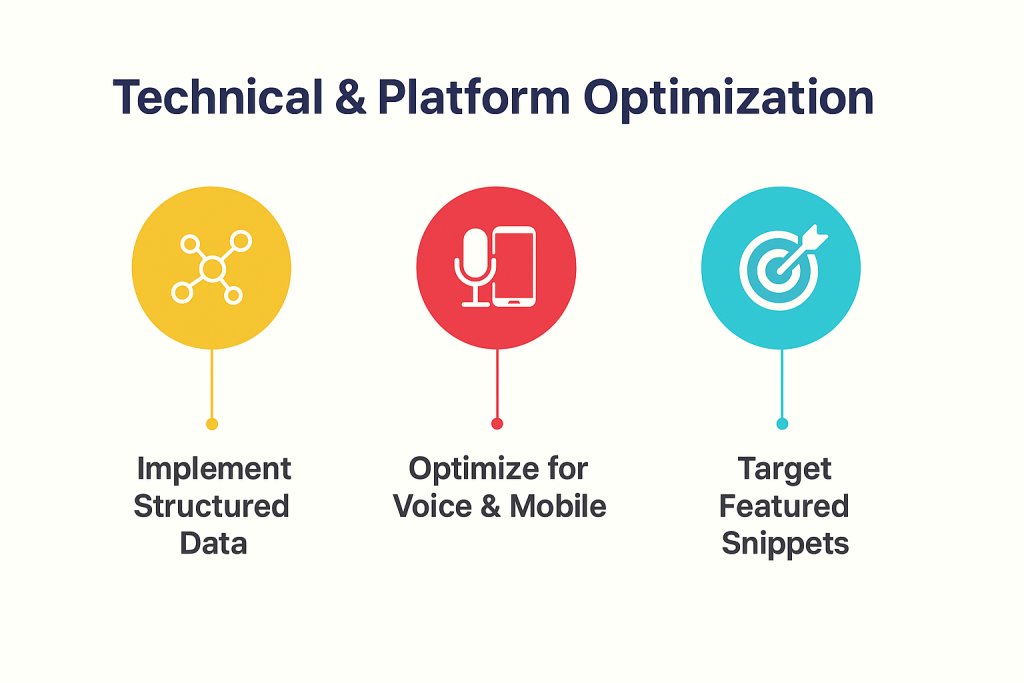
- Implement Structured Data: Use schema markup to provide context and increase the chances of appearing in featured snippets and answer boxes.
- Optimize for Voice & Mobile: Ensure fast-loading, mobile-friendly content, as most voice searches are made on smartphones.
- Target Featured Snippets: Provide concise, direct answers designed to be pulled into featured snippets, which often fuel voice assistant responses.
Authority & Strategy
- Establish Authority: Build trust by publishing reliable, authoritative content that positions your brand as an industry leader.
- Monitor & Refine: Track performance regularly, analyze results, and adjust your AEO strategy to improve visibility and engagement over time.
How AEO Differs from Traditional SEO?
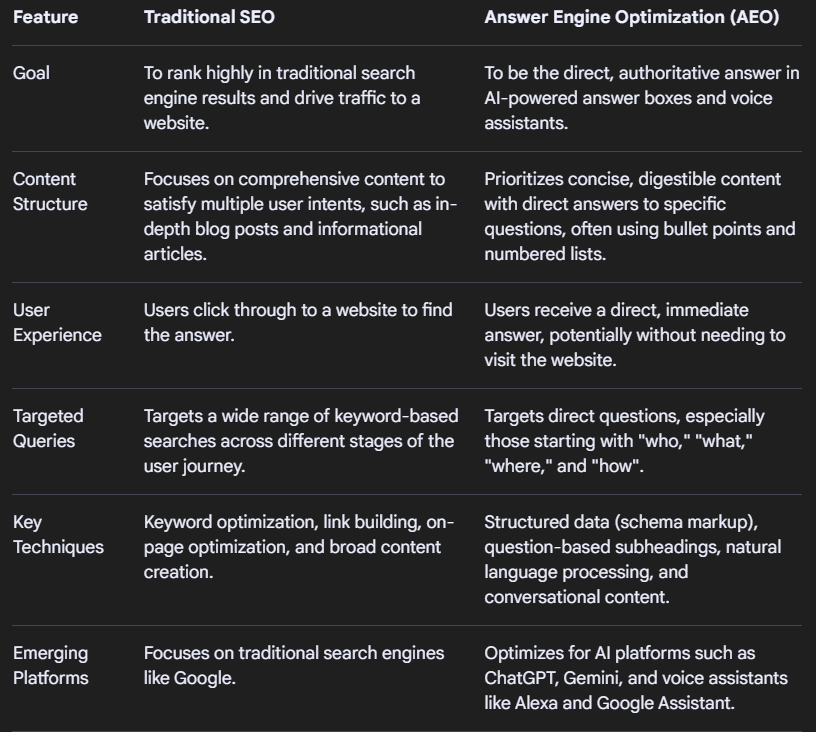
While both SEO (Search Engine Optimization) and AEO (Answer Engine Optimization) aim to improve visibility, the way they approach search is quite different.
Focus of Optimization
- SEO: Optimizes for keywords and search rankings, aiming to appear high on search engine results pages (SERPs).
- AEO: Optimizes for questions and answers, ensuring content is directly picked up and delivered by AI-powered answer engines.
User Experience
- SEO: Encourages users to click through to websites for detailed information.
- AEO: Provides instant, conversational answers—often without requiring a click—meeting the user’s need immediately.
Content Strategy
- SEO: Relies heavily on keyword density, backlinks, and long-form content.
- AEO: Prioritizes concise, structured, and conversational content, often using FAQs, schema markup, and natural language.
Technology Alignment
- SEO: Primarily designed around traditional search engines like Google and Bing.
- AEO: Designed for AI-driven platforms such as Google SGE, ChatGPT, Perplexity, Siri, and Alexa that rely on semantic understanding and generative AI.
Business Impact
- SEO: Drives traffic to websites by improving visibility in ranked results.
- AEO: Builds authority, captures user trust, and secures brand presence in direct answers across multiple platforms.
Future of AEO
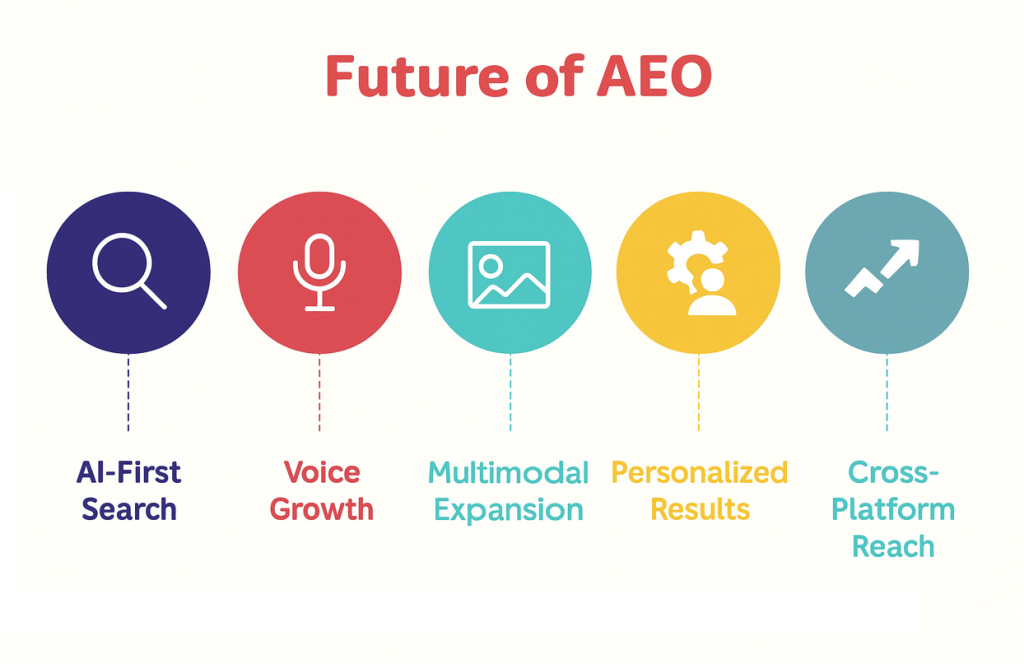
AEO is set to become a core part of digital marketing as search evolves from keyword lists to direct, AI-driven answers.
- AI-First Search: Platforms like Google SGE, ChatGPT, and Perplexity will dominate, making answer-ready content essential.
- Voice Growth: With smart devices rising, AEO ensures your content becomes the spoken response on assistants like Siri and Alexa.
- Multimodal Expansion: Future engines will blend text, images, and video—demanding content optimized for multiple formats.
- Personalized Results: AI will tailor answers to user intent, context, and history, requiring sharper content alignment.
- Cross-Platform Reach: Answers will appear beyond search—across social, e-commerce, and productivity apps.
Early adopters of AEO will gain authority and visibility, while late movers risk losing ground as answer engines become the new standard.
Conclusion
Answer Engine Optimization (AEO) marks the next evolution of search. As users shift from typing keywords to asking full, conversational questions, brands must adapt their content strategies to remain visible. By focusing on clarity, context, and structured information, businesses can position themselves as the trusted source that answer engines choose to highlight.
Those who embrace AEO early will gain stronger visibility, credibility, and customer trust—while setting themselves apart in an increasingly competitive, AI-driven digital landscape.
Deepak Wadhwani has over 20 years experience in software/wireless technologies. He has worked with Fortune 500 companies including Intuit, ESRI, Qualcomm, Sprint, Verizon, Vodafone, Nortel, Microsoft and Oracle in over 60 countries. Deepak has worked on Internet marketing projects in San Diego, Los Angeles, Orange Country, Denver, Nashville, Kansas City, New York, San Francisco and Huntsville. Deepak has been a founder of technology Startups for one of the first Cityguides, yellow pages online and web based enterprise solutions. He is an internet marketing and technology expert & co-founder for a San Diego Internet marketing company.

